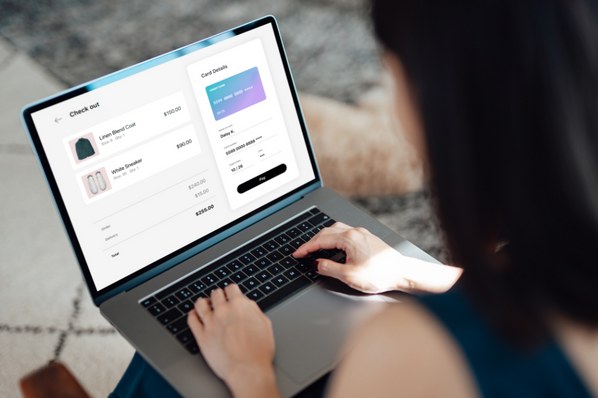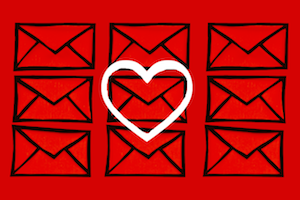

We all know that improving conversion rates on lead generation campaigns translates to more leads for advertisers. Yet most publishers don’t have a strategy in place for improving these numbers. Easier said than done, right?
The way people consume content has changed. Invasive tactics have simply lost effectiveness with the advent of new technologies that aid consumers in tuning out advertisements; DVRs to skip commercials, ad-blockers in web browsers, and Gmail’s smart labels just to name a few.
Publishers spend valuable time crafting beautiful newsletters, advertising campaigns and sponsored content, yet so little focus lands on who receives these messages. There is a fine line between invasive junk-email and a helpful newsletter, and that line is largely controlled by context. In other words, people will only be compelled to read and convert on your content if the subject is relevant to them in the moment they receive your message.
You wouldn’t expect mall shoppers to walk into every store, so why would you expect readers to digest every article you write? Get the context right, and your message will demand the attention of your readers. Get the context wrong, and you’ve bought a one-way ticket to their junk folder.
That’s why tracking and understanding your audience is so important—so you can create smaller, more targeted campaigns instead of sending every sponsored email to your entire database.
Understanding Your Publication's Online Engagement
This begs the question, how do you begin to understand your audience? The good news is that publishers tend to already have a strong following. All you need to do is start is paying attention to what your readers are already doing. Apply the following strategies to learn your audience’s historical behavior and trends, and your database will be primed for future segmentation.
Topic Tagging
The quickest path to getting to know your audience is to start tracking what each member is interested in at an individual level. Even with a niche publication, there will be some variance in people’s interests. To achieve this level of detail, you’ll need to categorize your content. Create a set of topics that your readers might come across throughout your articles or other media, and then start to keep track of which topics each reader engages with.
Once you have this history about each contact in your database, you’ll be able to intelligently select who you want to target with each sponsored campaign and encourage your readers to become promoters of your content. This approach will enable you to fine tune your overall sponsored campaign strategy to maximize engagement and conversion while reducing the occurrence of irrelevant emails.
Analyze Content Type
People absorb information in different ways. Roughly 90% of information transmitted to the brain is visual, and visuals are processed 60,000X faster in the brain than text. Because of this, many people respond best to written and image-based content such as blogs, ebooks, whitepapers, and infographics. The next largest segment are auditory learners, making up 30% of the population and learn by memorizing sound. They will absorb new information best by listening and talking, so webinars, video, or podcasts would be a better approach to reach these people. It’s important to keep this in mind when developing a strategy to understand your audience.
Pay attention to how they consume content -- who is attending webinars? Reading articles? Watching videos or downloading audio? In addition to helping you identify large-scale trends in terms of what format is most popular with your audience, at the individual level this will help you identify what type of content should be promoted to each member of your database.
If you have a group of people who respond to your webinars but seldom click through your newsletter, they may be auditory learners that will not respond as well to written or visual content. You are likely better off promoting a video, podcast or webinar over an ebook to this segment. You may even notice trends in these preferences from publication to publication, so it’s an important factor to keep tabs on.
Engagement Frequency
Keep track of your frequent flyers; your evangelists. These are the people that click through every newsletter, visit your website for new content consistently, or follow you on social media. History of frequent engagement with your digital presence is a good indicator of future interaction, so consider this group your A-listers and treat them as such. Especially where email deliverability is concerned, if content is king then engagement is queen.
To keep your reputation high, make sure to treat your frequent flyers with your best content and then consider syndicating it out to your B-list group, or even C-list if it’s proven to be a successful piece of content. This is especially true if the call-to-action in your message is a big ask. Consider the value your sponsor’s content will provide the consumer when crafting your landing pages and choosing how many or what depth of questions to require on conversion forms. A reader that consistently clicks through your newsletter content is more likely to open and click through a sponsored email than a dormant or cold lead, especially for those high-value offers.
Building a history of these metrics in your marketing database will make a big difference in your ability to deliver the right message at the right time.
- Tracking the topics your audience is interested in will foster higher conversion rates on sponsored lead generation campaigns because your messages will be relevant and interesting to the recipient. This in turn results in your content being shared more often on social media, and your readers will become promoters of your content.
- Analyzing what type of content your contacts prefer will enable you to deliver media in the format the individual is most receptive to.
- Keeping tabs on prior engagement will help identify your most engaged contacts, so that you can prioritize your sponsored offers and share user data with advertisers to prove you have an audience with purchase intent.
Ultimately, being more deliberate with your sponsored campaigns will help your publication increase lead generation by increasing engagement with your content, preventing database exhaustion and slowing the rate of database decay.
Do you keep track of your readers’ interests and preferences? Let us know in the comments below.



![5 Email Campaign Ideas to Help Increase Conversion Rates [Infographic]](https://blog.hubspot.com/hubfs/email-drip-campaign-ideas.jpeg)





![How to Expand Your Lead Nurturing Strategy Beyond Just Email [SlideShare]](https://blog.hubspot.com/hs-fs/hub/53/file-1390659247-jpg/Blog_Thinkstock_Images/lead_nurturing.jpg)